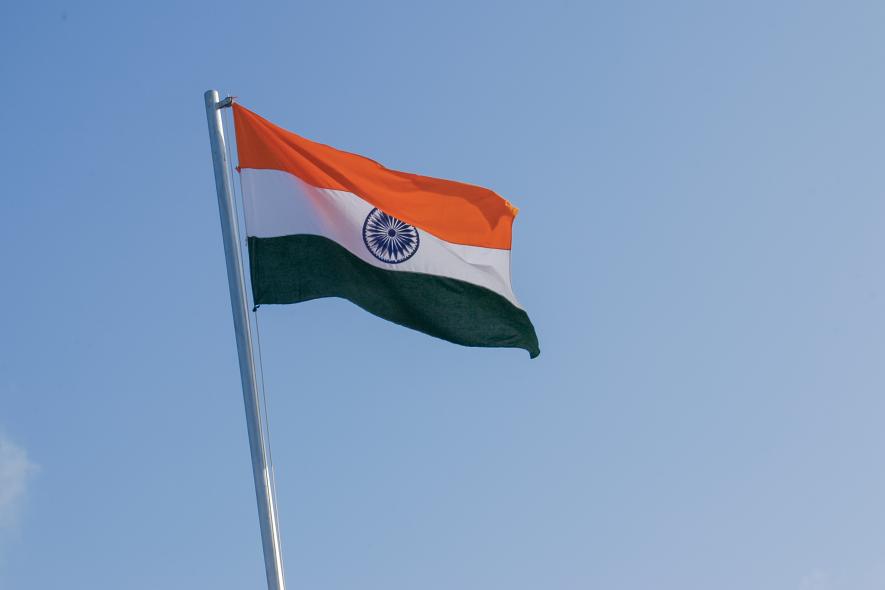On R-Day, Remember the Country is Committed to Scientific Temper

In the list of proverbial contrasts of India, the following must rate among the starkest. Its Constitution enjoins citizens to develop a scientific temper as part of their fundamental duties as Indians. Hence, supposedly, the scientific temper has state-backed heft. However, if scientific temper means openness to test beliefs against objective fact-based knowledge, and follow only practices that agree with this knowledge, then public practices of even its elite scientific institutions have not escaped from non-scientific beliefs.
It is routine for scientists of India’s national space programme to visit the temple at Tirumala before every critical launch to pray and present replicas of space crafts as offerings to the deity. Recent Indian National Science Congresses have had claims and papers about aircraft, guided missiles, and stem cell technologies in ancient India and the discovery of dinosaurs by Brahma. In one such congress, the minister of science and technology incorrectly claimed that the superiority of Vedic theory over Einstein’s theory of relativity is endorsed by none other than the renowned physicist, late Stephen Hawking.
In popular discourse, scientific temper is often thought of as an antidote to black magic, superstitions, and blind faith of the poor and marginal. Ordinary folks are said to lack scientific temper when they visit quacks to treat common diseases, tantriks physically abuse patients with mental disorders, or migrant workers throng the putrid ghats of the river in Delhi for Chhat puja in the middle of the pandemic. Ignorance, blind faith, and persistence of age-old practices are considered responsible for the lack of scientific temper among people. However, as the example of ISRO scientists shows, the dominance of non-scientific beliefs is not just a matter of lack of education and resources.
Dare to Know
Science and technology can be used, and are largely used, in a purely pragmatic manner for their beneficial results, without fomenting any scientific temper. Besides their cognitive content, the latter also involves a psychological orientation. Horace’s statement, ‘sapere aude—dare to know’, which is in the introductory phrase of Kant’s essay, ‘What is Enlightenment?’ captures this psychological thrust of scientific temper most clearly. Buddha’s last saying to Ananda, ‘Deepo Bhav—be your own lamp’, too, has a similar import. A scientific temper is a commitment to knowledge and scrutiny of every belief. It entails the abandonment of many convenient but unverifiable assumptions and accepting facts about oneself and one’s community which may be disconcerting. That is why scientific temper is impossible without confidence in one’s ability to overcome difficulties and optimism about the general state of affairs.
Whether scientific temper prevails in popular culture and everyday life is inextricably linked with broader social, political and ideological trends. Recent Indian history bears it out. The desirability of the scientific temper as a positive value in itself emerges from within the freedom movement, which was one of the most significant mass movements of the twentieth century. The Indian freedom movement was driven not just by opposition to colonial rule but was also energised by optimism about Indians’ ability to make a better society. Nehru’s vision for independent India was the most precise articulation of this optimism.
In this vision, science and technology are not only meant to overcome widespread poverty through higher productivity but also as counters to centuries-old traditional atrophy, prejudice, and self-defeating fatalism. These were not the make-believe fantasies of a preacher but integrated with a concrete programme of action, which fortified its self-confidence. Its key component was national-level planning. Already in 1938, Nehru headed the National Planning Committee formed by the Congress party. It included some of India’s most talented public figures at the time; well-known civil engineer M Visvesvaraya, physicist Meghnad Saha, and sociologist Radhakamal Mukerjee.
If the Nehruvian scientific outlook sought progressive change through planned action, powerful established interests of the already privileged social strata only wanted change to the extent that it benefitted them. To them, access to science and technology was only a means to advance their professional self-interest, not an opportunity to refashion one’s world-view. The greatest failure of post-independence India under Nehru was to let the dominant sections of society determine the path of development. Take the example of education. Hindu caste society had historically restricted education to Savarna castes, and only these castes garnered benefits of modern education under colonial rule. Post-independence India did not initiate any state-funded programme for universal elementary education so that every child, irrespective of family circumstances, could get a decent education. Instead, the emphasis was on starting institutions of higher learning, from which only the already-privileged strata could benefit.
Even now, three generations after independence, most Dalit children, or those belonging to backward castes and economically poor minorities, get only minimal education. We should contrast this with post-revolutionary societies such as the former Soviet Union, China, Vietnam, and Cuba. All these countries prioritised universal free education after their revolutions so that, within a generation, every child had access to equal education.
Despite a clear articulation of the desirability of scientific temper at the top, the popular culture in post-independence India did not encourage a scientific outlook. Broad masses of Indians, who could be vehicles of scientific outlook through progressive changes in their living conditions, remained bereft of even basic life necessities. Educated sections of the privileged strata used their access to science and technology for professional advantage but had little incentive to give up their traditional belief systems associated with their privileged status. Rationalist associations in different parts of the country, left-led shastra-sahitya parishads and gyan-vigyaan samitis, and the valiant efforts of people such as Dr Narendra Dabholkar, have kept the need to spread scientific temper for progressive changes in society alive.
Attack on Scientific Temper in Modi Regime
The neo-liberal political economy since the 1990s has done away with the paradigm of planned development within which stood state-mandated encouragement to scientific temper. The maximisation of self-interest through markets is the new mantra. Markets impose their logic through uncertainty and chaos. At the level of individuals and society, submission to market ideology marks a simultaneous acceptance of the human impotence to fashion their social world. It saps the self-confidence necessary for a scientific outlook.
Market-led societies are immensely stressed. While the super-rich indulges in ego-boosting fantasies (think Jeff Bezos and his buddies burning millions of dollars for a few minutes’ space joyride), working people are forced into long hours of drudgery and to seek non-rational belief systems as an opiate. New religiosities and babadoms, fanatical obsession with identitarian assertions, fascination with authoritarian charlatans, and self-indulgence of selfie culture manifest the dire need for quick-relief belief systems.
The moral challenge of ‘dare to know’, readiness to discard beliefs that do not meet rational scrutiny and accept objective knowledge even if it hurts convenient assumptions, have little attraction in the neo-liberal moral economy.
Modi regime is using neo-liberal order for Hindutva goals. Falsification of history and rumour-mongering against targeted minorities and political opponents are integral to its fascist genes. Outlandish claims about the achievements of ancient Hindus, and make-believe virtues of Hindu religious symbols like the cow, are integral to its official ideology. Offices of the Prime Minister and cabinet ministers have been used to spread such claims. A new low in the history of the post-independence Indian state is the suppression of official data on the economy and Covid-19 deaths. Needless to say, the regime is actively hostile of penetrating gaze of a scientific outlook.
Given such dismal history and critical present, what then is the future of scientific temper in India? Notwithstanding neo-liberal amorality and the Modi regime's hostility to rational scrutiny of its ideological pillars, current India also has new encouraging shoots of scientific world-view. First is the new millennial youth. Its culture may show hedonistic self-indulgence at times, but this youth is also fiercely independent and has little patience with the supposed nuggets of wisdom of any supreme leader. Their enlightened sections follow their own lamps and are willing to meet Horace’s challenge. The second green area for scientific temper is the domain of popular protests. Scientific temper flowers in an environment of public rationality. The two latest mass protests, those against CAA-NPR and the three farm laws, both relied on public reason to advance their demands, against dirty identity politics and vacuous market-driven promises of the regime.
As India enters the fourth quarter of independence, battle lines between the self-confidence, optimism and daring of knowledge and scientific temper on the one side, and darkness, arrogance and hatred of prejudices and falsehoods on the other, are going to be sharper than ever.
The author teaches Physics at St Stephen’s College, Delhi. The views are personal
Get the latest reports & analysis with people's perspective on Protests, movements & deep analytical videos, discussions of the current affairs in your Telegram app. Subscribe to NewsClick's Telegram channel & get Real-Time updates on stories, as they get published on our website.
























